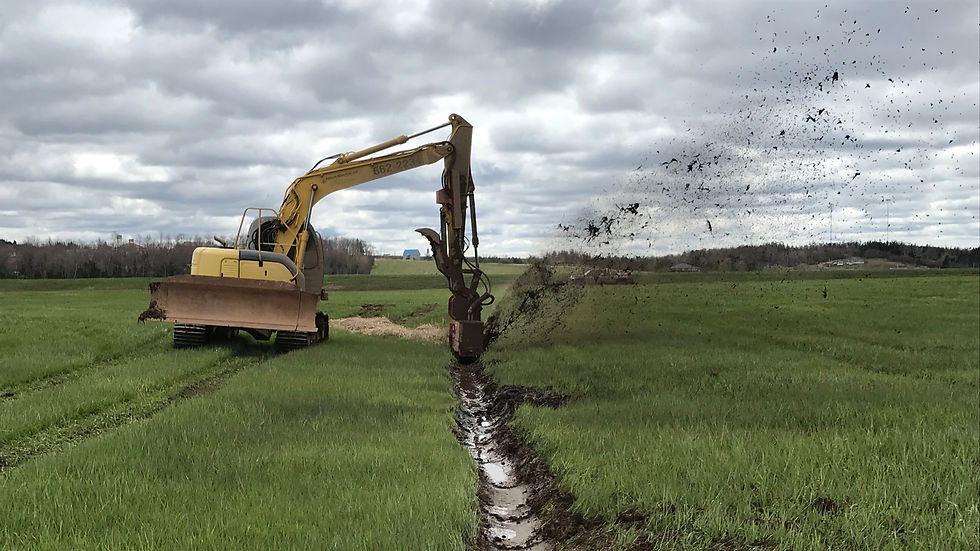What is a Two-Stage ditch?
- Carole Fisher
- Feb 19, 2021
- 2 min read
What is a Two-Stage ditch all about? It has come to my realization that we talk about how great two-stage ditching is, but haven't taken the time to concisely describe what it is all about. So I'm going to try and provide a short version in about 300 words and one graphic.
You know how water has a mind of its own in a ditch that is not sized properly? Weaving and winding its own path? Although weak in any one moment, the constant flow of even the smallest stream persists to generate power strong enough to erode the land, shaping a path of it's own mind. The problem with conventional ditches is they are one size, while water levels, as we know all to well, are far too variable to design the perfect ditch. A Two-stage ditch addresses this problem.
A Two-stage ditch is designed to hold both low and high water flows by creating a smaller lower main channel ( First Stage), almost a 'mini ditch,' inside a larger upper channel (Second Stage). The smaller lower main channel is shaped and designed so the water doesn't have the space to meander during low water flow periods. In the event of a downpour, the larger upper channel has the capacity to hold the high water flow, protecting the surrounding land of overflowing.
When properly built, the larger upper channel withholds vegetation on the benches and slopes, protecting the surrounding land from erosion in to the lower main channel.
The graphic below is an illustration of what a Two-Stage ditch might look like. When created with the Ditch Doctor® the lower main channel has the ideal contour and importantly the vegetation on the benches and slopes has been unaffected. You can read some cases studies and learn more on our webpage about a Two-Stage ditch.






Comments